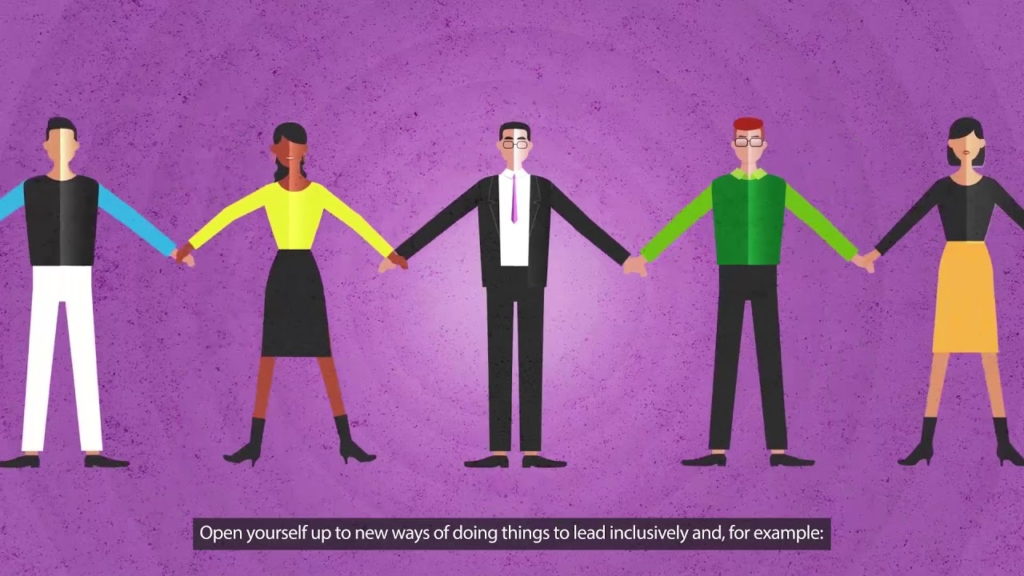In the modern business landscape, diversity and inclusion (D&I) have emerged as critical components for organizational success. These concepts extend beyond compliance with legal requirements or fulfilling corporate social responsibility; they represent fundamental values that drive innovation, employee satisfaction, and business performance. This article delves into the importance of diversity and inclusion in the workplace, examines the benefits and challenges, and provides strategies for creating an inclusive environment that values every employee.

Table of Contents
Understanding Diversity and Inclusion

What is Diversity?
Diversity refers to the variety of differences among people in an organization. These differences can include race, gender, age, sexual orientation, religion, disability, socioeconomic background, education, and more. Diversity acknowledges that everyone is unique and brings different perspectives, experiences, and skills to the workplace.
What is Inclusion?
Inclusion is the practice of creating an environment where all individuals feel valued, respected, and have equal access to opportunities and resources. It goes beyond simply having a diverse workforce to ensuring that everyone can fully participate and contribute to the organization. Inclusion involves active efforts to involve all employees in the workplace, considering their diverse backgrounds and perspectives.
The Business Case for Diversity and Inclusion

Enhanced Innovation and Creativity
Diverse teams bring a wealth of different perspectives and ideas, which can lead to more innovative solutions and creative problem-solving. When people from various backgrounds collaborate, they are more likely to challenge conventional thinking and explore new approaches. Research by McKinsey & Company has shown that organizations with diverse executive teams are more likely to outperform their peers in terms of profitability and value creation.
Improved Decision-Making
Inclusion fosters an environment where diverse voices are heard and considered, leading to better decision-making. Studies have found that diverse teams are more likely to evaluate facts more thoroughly and make decisions that are less prone to groupthink. This comprehensive approach to decision-making can result in more effective and sustainable business strategies.
Greater Employee Engagement and Retention
Employees who feel included and valued are more likely to be engaged and satisfied with their jobs. A culture of inclusion can boost morale, reduce turnover, and increase productivity. When employees believe that their contributions matter and that they have equal opportunities for growth and development, they are more likely to remain loyal to the organization.
Enhanced Reputation and Employer Brand
Organizations that prioritize diversity and inclusion are often viewed more favorably by customers, investors, and potential employees. A strong commitment to D&I can enhance an organization’s reputation and make it an employer of choice for top talent. Companies that are seen as inclusive are better positioned to attract and retain a diverse workforce, which is increasingly important in today’s competitive job market.
Access to a Wider Talent Pool
By embracing diversity, organizations can tap into a broader talent pool. This is particularly important in industries facing skills shortages or those that require a wide range of expertise. Inclusive hiring practices ensure that companies do not miss out on qualified candidates from underrepresented groups.
Challenges to Diversity and Inclusion

Unconscious Bias
Unconscious biases are implicit attitudes or stereotypes that influence our understanding, actions, and decisions in an unconscious manner. These biases can affect hiring, promotions, and everyday interactions, leading to a less inclusive environment. Addressing unconscious bias requires awareness, education, and proactive measures to mitigate its impact.
Resistance to Change
Implementing D&I initiatives can encounter resistance from employees who are accustomed to the status quo. Change can be uncomfortable, and some may feel threatened by efforts to alter workplace dynamics. Overcoming resistance requires strong leadership, clear communication, and a commitment to fostering an inclusive culture.
Tokenism
Tokenism occurs when organizations superficially include individuals from underrepresented groups without genuinely integrating them into decision-making processes or valuing their contributions. Tokenism can lead to frustration and disengagement among those who feel they are only included for the sake of appearances.
Measuring Impact
Quantifying the impact of diversity and inclusion initiatives can be challenging. While qualitative benefits like employee satisfaction and engagement are important, organizations also need to track quantitative metrics to assess progress and make data-driven decisions. Developing effective measurement tools and benchmarks is essential for demonstrating the value of D&I efforts.
Strategies for Fostering Diversity and Inclusion

Leadership Commitment
Strong leadership is crucial for driving diversity and inclusion initiatives. Leaders must not only endorse D&I values but also model inclusive behaviors and hold themselves and others accountable. This includes setting clear goals, allocating resources, and integrating D&I into the organization’s strategic priorities.
Education and Training
Regular training on diversity, inclusion, and unconscious bias can help raise awareness and build skills among employees. Training programs should be interactive and ongoing, rather than one-time events, to ensure that D&I principles are embedded in the organizational culture.
Inclusive Recruitment Practices

To build a diverse workforce, organizations must adopt inclusive recruitment practices. This includes:
- Widening the candidate pool: Actively seeking candidates from diverse backgrounds and using diverse hiring panels.
- Bias-free job descriptions: Writing job descriptions that are inclusive and free from gendered or biased language.
- Structured interviews: Using standardized interview questions and evaluation criteria to minimize bias.
Employee Resource Groups (ERGs)
Employee Resource Groups (ERGs) are voluntary, employee-led groups that foster a diverse and inclusive workplace aligned with the organization’s mission and values. ERGs provide a platform for employees to connect, share experiences, and support one another. They can also offer valuable insights to management on D&I issues and initiatives.
Mentorship and Sponsorship Programs
Mentorship and sponsorship programs can help underrepresented employees advance their careers by providing guidance, support, and opportunities for growth. Mentors and sponsors play a critical role in helping mentees navigate the organization, develop skills, and access leadership opportunities.
Inclusive Policies and Practices
Organizations must review and update their policies and practices to ensure they are inclusive. This includes:
- Flexible work arrangements: Offering options like remote work, flexible hours, and part-time schedules to accommodate diverse needs.
- Equal pay: Conducting regular pay audits to ensure pay equity across different groups.
- Anti-discrimination policies: Implementing and enforcing policies that prohibit discrimination and harassment.
Celebrating Diversity
Recognizing and celebrating diversity through events, initiatives, and communications can reinforce the organization’s commitment to inclusion. Celebrations can include cultural heritage months, diversity days, and recognition of significant achievements by diverse employees.
Continuous Improvement
Diversity and inclusion are ongoing efforts that require regular assessment and adjustment. Organizations should establish mechanisms for feedback, track progress through metrics and benchmarks, and remain agile in adapting to new challenges and opportunities.
Case Studies: Successful D&I Initiatives

Microsoft
Microsoft has been a leader in promoting diversity and inclusion. The company has implemented comprehensive D&I strategies, including unconscious bias training, inclusive hiring practices, and strong support for ERGs. Microsoft’s commitment to D&I is reflected in its diverse leadership team and its efforts to ensure equal opportunities for all employees.
Salesforce
Salesforce has made significant strides in fostering an inclusive culture. The company conducts regular pay audits to address pay equity and has established robust mentorship and sponsorship programs. Salesforce also supports a wide range of ERGs and actively engages in community outreach to promote diversity and inclusion.
Google has invested heavily in diversity and inclusion initiatives. The company offers extensive training programs, inclusive recruitment practices, and support for ERGs. Google’s D&I efforts are guided by data-driven insights and a commitment to transparency, ensuring that progress is measurable and impactful.
Accenture
Accenture is known for its strong focus on diversity and inclusion. The company has set ambitious goals for gender parity and has implemented comprehensive policies to support diverse employees. Accenture’s commitment to D&I is evident in its leadership representation, inclusive workplace culture, and dedication to continuous improvement.
Conclusion
Diversity and inclusion are not just buzzwords; they are essential components of a successful, innovative, and resilient organization. By embracing and promoting D&I, companies can unlock the full potential of their workforce, enhance their reputation, and achieve sustainable growth. The journey towards a truly inclusive workplace requires commitment, effort, and a willingness to learn and adapt. As organizations continue to prioritize diversity and inclusion, they will not only improve their bottom line but also contribute to a more equitable and just society.
for more information,visit https://beyondeliteincorporation.com/
FAQ
1. What is the difference between diversity and inclusion?
Diversity refers to the variety of differences among people in an organization, including race, gender, age, sexual orientation, religion, disability, socioeconomic background, and more. Inclusion is the practice of creating an environment where all individuals feel valued, respected, and have equal access to opportunities and resources. While diversity focuses on the makeup of the workforce, inclusion focuses on ensuring that diverse individuals are fully integrated and able to contribute.
2. Why is diversity and inclusion important in the workplace?
Diversity and inclusion are important because they drive innovation, improve decision-making, increase employee engagement and retention, enhance the organization’s reputation, and provide access to a wider talent pool. A diverse and inclusive workplace fosters creativity, reduces groupthink, and ensures that all employees feel valued and motivated.
3. How does diversity enhance innovation and creativity?
Diverse teams bring a range of perspectives and ideas, which can lead to more innovative solutions and creative problem-solving. When people from various backgrounds collaborate, they are more likely to challenge conventional thinking and explore new approaches, leading to breakthroughs and competitive advantages.
4. What are some common challenges in implementing diversity and inclusion initiatives?
Challenges include unconscious bias, resistance to change, tokenism, and difficulty measuring impact. Unconscious biases can affect hiring and promotion decisions, while resistance to change can stem from employees who are comfortable with the status quo. Tokenism occurs when organizations superficially include individuals from underrepresented groups without genuinely valuing their contributions. Measuring the impact of D&I initiatives can be difficult but is necessary for demonstrating progress.
5. What are unconscious biases, and how can they be addressed?
Unconscious biases are implicit attitudes or stereotypes that influence our understanding, actions, and decisions in an unconscious manner. They can be addressed through awareness, education, and proactive measures such as bias training, standardized hiring practices, and creating a culture that encourages open dialogue and self-reflection.
6. What role do leaders play in promoting diversity and inclusion?
Leaders play a crucial role in driving diversity and inclusion initiatives by endorsing D&I values, modeling inclusive behaviors, setting clear goals, allocating resources, and holding themselves and others accountable. Strong leadership commitment is essential for fostering an inclusive culture and overcoming resistance to change.
7. How can organizations measure the impact of their diversity and inclusion initiatives?
Organizations can measure the impact of D&I initiatives through a combination of quantitative and qualitative metrics. Quantitative metrics include diversity representation, pay equity, and employee retention rates. Qualitative metrics include employee satisfaction surveys, feedback from focus groups, and assessment of the overall workplace culture. Regularly tracking these metrics helps organizations assess progress and make data-driven decisions.
8. What are Employee Resource Groups (ERGs), and how do they support diversity and inclusion?
Employee Resource Groups (ERGs) are voluntary, employee-led groups that foster a diverse and inclusive workplace aligned with the organization’s mission and values. ERGs provide a platform for employees to connect, share experiences, and support one another. They also offer valuable insights to management on D&I issues and initiatives, helping to drive meaningful change.
9. What are some effective strategies for inclusive recruitment practices?
Effective strategies for inclusive recruitment include widening the candidate pool, using diverse hiring panels, writing bias-free job descriptions, and conducting structured interviews with standardized questions and evaluation criteria. These practices help minimize bias and ensure a fair and equitable hiring process.
10. How can organizations create a culture of inclusion?
Organizations can create a culture of inclusion by:
- Ensuring leadership commitment and accountability.
- Providing regular D&I education and training.
- Implementing inclusive policies and practices.
- Supporting ERGs and mentorship programs.
- Celebrating diversity through events and communications.
- Encouraging open dialogue and feedback.
- Continuously assessing and improving D&I efforts.
11. What are some examples of companies that have successfully implemented D&I initiatives?
Examples include:
- Microsoft: Known for its comprehensive D&I strategies, unconscious bias training, inclusive hiring practices, and strong support for ERGs.
- Salesforce: Conducts regular pay audits for pay equity, supports robust mentorship and sponsorship programs, and actively engages in community outreach.
- Google: Offers extensive training programs, inclusive recruitment practices, and data-driven D&I efforts.
- Accenture: Focuses on gender parity, comprehensive policies supporting diverse employees, and continuous improvement in D&I.
12. How can organizations address resistance to diversity and inclusion initiatives?
Addressing resistance requires strong leadership, clear communication, and a commitment to fostering an inclusive culture. Leaders should model inclusive behaviors, provide education on the benefits of D&I, and create opportunities for open dialogue. Addressing concerns and demonstrating the positive impact of D&I initiatives can help mitigate resistance.
13. What are the benefits of mentorship and sponsorship programs for diversity and inclusion?
Mentorship and sponsorship programs help underrepresented employees advance their careers by providing guidance, support, and opportunities for growth. Mentors and sponsors play a critical role in helping mentees navigate the organization, develop skills, and access leadership opportunities, thereby promoting diversity and inclusion at all levels.
14. Why is it important to celebrate diversity in the workplace?
Celebrating diversity reinforces the organization’s commitment to inclusion, recognizes the unique contributions of diverse employees, and promotes a positive and inclusive workplace culture. Events and initiatives that celebrate diversity can enhance employee engagement, foster a sense of belonging, and encourage cross-cultural understanding.
15. How can organizations continuously improve their diversity and inclusion efforts?
Continuous improvement involves regularly assessing D&I initiatives, tracking progress through metrics and benchmarks, seeking feedback from employees, and remaining agile in adapting to new challenges and opportunities. Organizations should stay informed about best practices, invest in ongoing education and training, and demonstrate a genuine commitment to fostering an inclusive environment.
